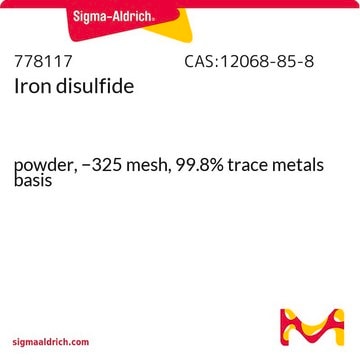01-2690
Aluminum chloride
SAJ first grade, ≥98.0%
About This Item
Produits recommandés
Qualité
SAJ first grade
Pression de vapeur
1 mmHg ( 100 °C)
Pureté
≥98.0%
Forme
solid
Pertinence de la réaction
reagent type: catalyst
core: aluminum
Disponibilité
available only in Japan
pH
2.4 (20 °C, 100 g/L)
Pf
190 °C (lit.)
Chaîne SMILES
Cl[Al](Cl)Cl
InChI
1S/Al.3ClH/h;3*1H/q+3;;;/p-3
Clé InChI
VSCWAEJMTAWNJL-UHFFFAOYSA-K
Vous recherchez des produits similaires ? Visite Guide de comparaison des produits
Catégories apparentées
Caractéristiques et avantages
Mention d'avertissement
Danger
Mentions de danger
Classification des risques
Eye Dam. 1 - Skin Corr. 1B
Risques supp
Code de la classe de stockage
8B - Non-combustible corrosive hazardous materials
Classe de danger pour l'eau (WGK)
WGK 1
Point d'éclair (°F)
Not applicable
Point d'éclair (°C)
Not applicable
Équipement de protection individuelle
Eyeshields, Faceshields, Gloves, type P3 (EN 143) respirator cartridges
Certificats d'analyse (COA)
Recherchez un Certificats d'analyse (COA) en saisissant le numéro de lot du produit. Les numéros de lot figurent sur l'étiquette du produit après les mots "Lot" ou "Batch".
Déjà en possession de ce produit ?
Retrouvez la documentation relative aux produits que vous avez récemment achetés dans la Bibliothèque de documents.
Notre équipe de scientifiques dispose d'une expérience dans tous les secteurs de la recherche, notamment en sciences de la vie, science des matériaux, synthèse chimique, chromatographie, analyse et dans de nombreux autres domaines..
Contacter notre Service technique







